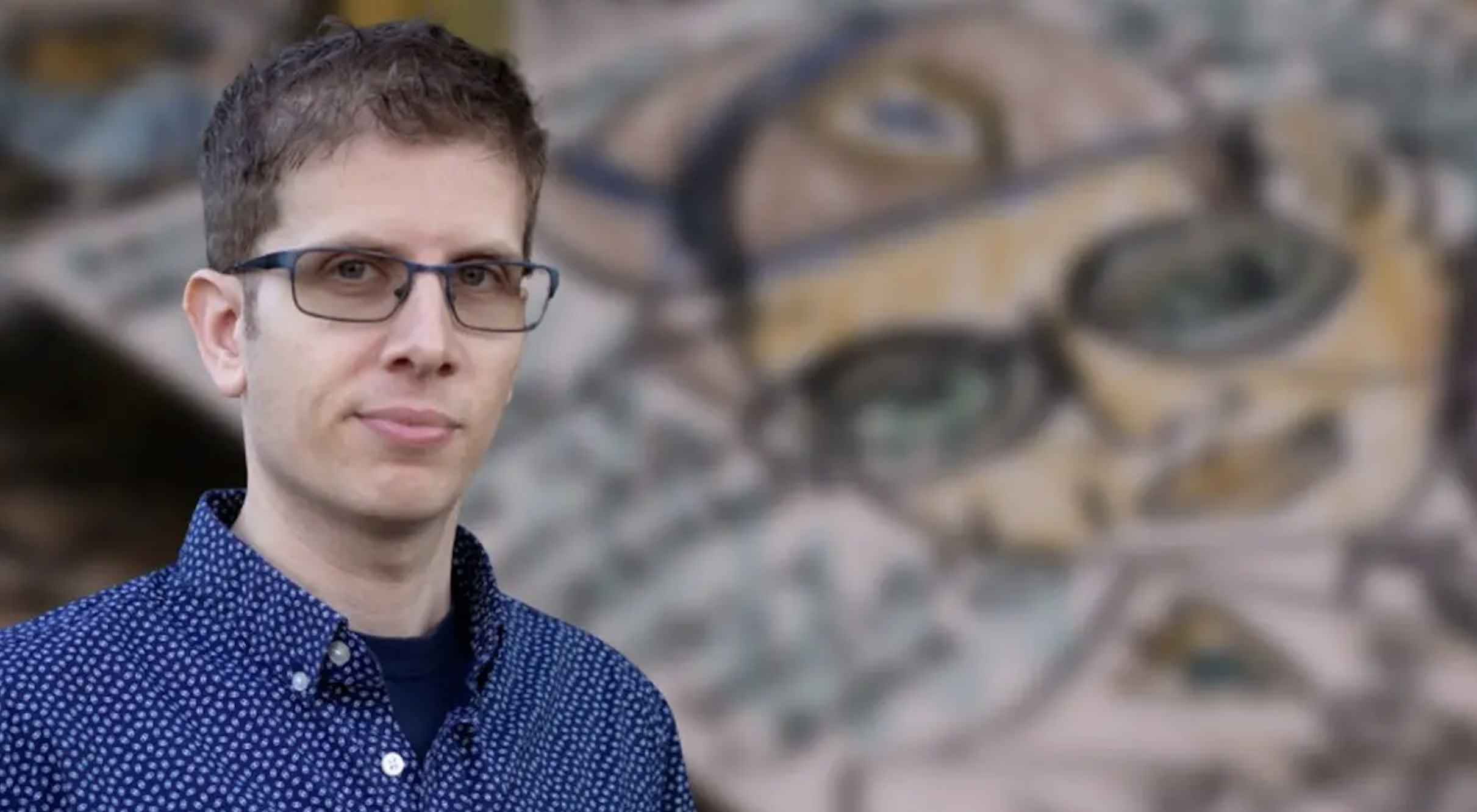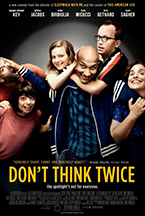A Conversation with Elan Golod (NATHAN-ISM)

A cinematic twister lensed with abundant patience and empathy by first-time feature director Elan Golod, a former Israeli soldier and a veteran editor, Nathan-ism tells the stranger-than-fiction saga of outsider artist Nathan Hilu, a WWII vet and NYC-born son of Syrian Jews, who was tasked to guard the top Nazi war criminals during the Nuremberg trials. He then spent the next seven decades obsessively preserving his historical record through “Nathan-ism,” the nonagenarian’s self-invented art form. Which allowed for some truly bizarre and troubling encounters (it was Hitler’s architect/armament procurer Speer himself who advised the 18-year-old private to “keep your eyes open and write what you see here”) to be transformed into a striking visual memoir, complete with counterintuitively, sunnily-colored drawings.
By piecing together interviews with academics and historians (including the Hebrew Union College caretaker of the Hilu collection who stresses that Nathan uses art to “stand up for his memories” and even the DOJ’s former “Nazi hunter” Eli Rosenbaum) with the oftentimes controlling and pugnacious protagonist himself from his tiny LES apartment, a bigger picture emerges. Though not necessarily a clearer one; especially after Golod decides to hire a dogged researcher to verify Hilu’s incredible tales (many of which are likewise made visual through some wonderfully evocative animation). But then, as the passionate creative himself earnestly emphasizes, it’s important for the audience to understand that his life produces his art: life the way he sees it.
Hammer to Nail: So how exactly were you first exposed to filmmaking through your military service? Did having served in the Israeli army make it easier to build trust with Nathan?
Elan Golod: As part of my service in the IDF I directed and edited training videos for the army, so that was my first exposure to the craft of filmmaking. Despite having had some military experience myself, and with it this understanding of the stakes involved, I can’t imagine first learning about the details of something as sweeping as the Holocaust even as I was asked to continually guard the very individuals who orchestrated those atrocities. This essential conflict between identity and duty is one of the things that first drew me to Nathan’s story.
It’s hard to say how big of a factor my service in the Israeli army was in gaining Nathan’s trust. However he did occasionally refer to my experience as a soldier and being from Israel, so that definitely was part of his mindset during the filming process.
HtN: You’ve been Mike Birbiglia’s editor on a number of films, and you also recently worked on one of my favorite documentaries of the last several years, Maya Zinshtein’s Til Kingdom Come. So how does your editing experience influence your approach to directing?
EG: First of all, to be clear, while I was part of the editing team on Birbiglia’s Sleepwalk with Me and Don’t Think Twice, I was working with my mentor Geoffrey Richman, a very experienced editor of both scripted and documentary films.
In my experience editing documentaries, and even on scripted films, many elements of the story are discovered in the edit. After four years of filming we had several hundred hours worth of footage of Nathan from which to distill the core of his story. In the building of the film’s structure I wanted to subtly convey some of my own internal process of coming to terms with the uncertainty behind Nathan’s stories, leaving breadcrumbs for the viewers to pick up along their journey of getting to know Nathan.

A still from NATHAN-ISM
As an editor I relished the challenge of crafting a narrative that allowed for a symbiotic relationship between the traditionally “objective” media, such as archival footage from post-WWII Germany and the Nuremberg Trials, and Nathan’s subjective retelling of his personal experiences.
HtN: What led to your decision to use animation – and how did you find your two-person team?
EG: From early on in the process I felt that Nathan’s vibrant artworks called for an animation treatment to help bring his stories to life and lead the viewer into his very subjective point of view. Héloïse Dorsan Rachet, who is based in Paris, had done animation for a colleague’s film (Michelle Steinberg’s A Place to Breathe) and I was struck by a childlike and innocent quality to some of her work; I felt she would be able to emulate Nathan Hilu’s style. We went through a long process of animation tests based on many references from Nathan’s artwork. It was very important to me to remain as authentic to Nathan’s original work as possible. Thankfully, Nathan did endless drawings of the key figures in the trial and key scenes in the narrative.
Hectah Arias got involved later in the process after I saw his amazing animation work on Louis Armstrong’s Black & Blues. He brought Armstrong’s scrapbook collages to life in a way that reminded me of Nathan’s collage work; so I brought him onboard to help add a more tactile feel to Héloïse’s 2D animations.
HtN: Though you hadn’t initially planned on including your developing relationship with Nathan on camera, your patience and empathy with a sometimes difficult protagonist is what ultimately makes the film so touching. Yet I also wonder, especially as you began digging deeper into Nathan’s story, whether there were times you considered shelving the project. How did you navigate your devotion to Nathan versus your commitment to documenting the “truth” (whatever that means)?
EG: As I spent more time with Nathan in person, and also with the footage of Nathan, I came to realize that I couldn’t escape being an active part in the film; his relationship with the filmmaking team had become an integral thread in the story. Over the eight year journey on this doc I did have crises of faith at times where I wasn’t sure how the film would come together, yet I remained confident that Nathan’s story needed to be shared and that it would have resonance for many people.
This project required me to strike a delicate balance between being a supportive friend to Nathan, and pursuing my own curiosity to uncover the historical truth behind his stories. Additionally, I grappled with the fear of inadvertently providing Holocaust deniers with an opportunity to exploit Nathan’s account, all the while striving to uphold the significance of firsthand witnesses.
There certainly was a level of guilt and trepidation leading up to filming the scene in which I confront Nathan about our findings. However, I am grateful that despite the tension of that day it did not have a lasting impact on our relationship. By the following week Nathan had moved on and returned to his usual self, eagerly sharing his latest artworks with me.
HtN: Did Nathan ever see any cuts of the film? If so, what was his reaction?
EG: Unfortunately Nathan passed before I could share with him full cuts of the film, but I did share with him pieces of footage and some early edits of scenes. He was very excited to see himself onscreen and was thrilled that I was helping him share his life story.
– Lauren Wissot











